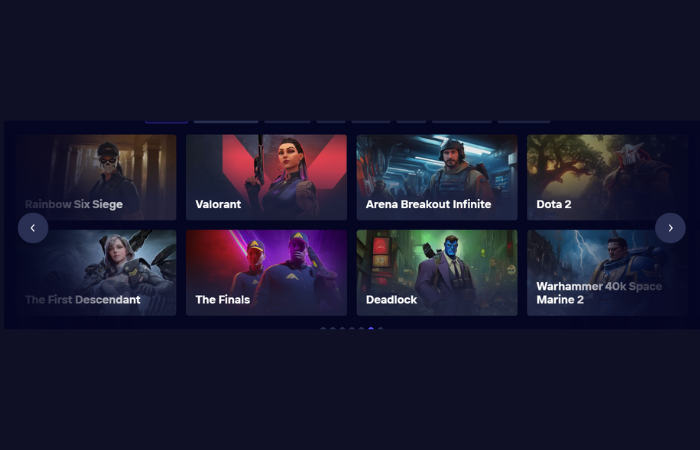Introduction
The current World of Warcraft raiding is a battle of process, rather than hype. Chaos is transformed into repeatable pulls with addons, logs, and scheduling tools. In this context, WoW raid carry can be discussed as a calendar insurance and disciplined systems (with an organized WoW raid boost when required) can be seen as the driving force of the steady progress.
Raids as Systems — Roles, Tiers, Progression Logic
Raids are designed puzzles: tanks control threat and positioning, healers convert damage patterns into ramps, and DPS control movement and burst windows. LFR, Normal, Heroic and Mythic increase the difficulty of execution not only item level. Teams that consider wipes as data points gain momentum quicker than teams that pursue a single ideal pull.
The invisible boss is attendance. Structured community evenings and planned WoW raid runs, volatility of the roster in an organized way, where the teams get to play the same mechanics with the same people long enough to develop muscle memory.
The Core Tech Stack for Raiders
Boss Mods & Personal Automation
Deadly Boss Mods or BigWigs include movement and cooldown timers, WeakAuras include personal checklists of soaks, dispels, and nudges of pre-cast now. Nameplates adjusted to cast emphasis and interrupts cause a decrease in reaction time. Make the UI lean: fewer, more explicit alerts are better than a wall of sirens.
Logs & Replays (Evidence, Not Opinions)
Wipes become wisdom in Warcraft Logs. Start with deaths by timestamp, correlate with mechanics, and check cooldown usage during the largest damage spikes. Record “first fixes” in an annexed note so that the second session starts with specific experiments rather than trial and error.
Roster & Cooldown Planning
Method Raid Tools is a tool that exports assignments and cooldown rotations to one source of truth. The phases, anticipated spikes, externals, etc., of each boss are contained in a small spreadsheet that does not allow improvisation at the last minute. In cross-guild, it is better to have scope and expectations clearly stated in the event of any WoW raid services to schedule support.
Network & Input Hygiene
Both wired connections minimize loss of packets; QoS prevents spiking of latency by background traffic. Use map defenses and movement to keys that one feels comfortable with and have macros light. It is aimed at reliability in short, scripted windows.
Schedule & Attendance Engineering
Apply Discord scheduling, reaction roles, and a set weekly schedule. Warm-up boss at the start of nights to get comms in tune, then deal with a single comms-mechanic at a time. In the event of mixed-roster nights, post targets of the week early; in case of roster vacancies, schedule alternatives or WoW raid boosts which do not disrupt practice time but do not break the learning loop.
Progression KPIs — Measure What Moves the Needle
Make raiding a production line and follow a few signals.
| KPI | What It Measures | Starter Target | Review |
| Wipe Cause Rate | % wipes from the same mechanic | Downtrend over 2 sessions | Nightly |
| Cooldown Coverage | Planned vs. used externals on spikes | ≥90% on scripted spikes | Nightly |
| Transition Timing | Early arrivals with a GCD to spare | ≥95% of players | Nightly |
| Turnover of Pulls | Number of full mechanics seen/hour | Rising week over week | Weekly |
This light telemetry demonstrates the fact that changes are really useful, rather than based on vibes.
When External Help Makes Sense (kept minimal, organic)
Other teams stabilize their calendar with little and well-defined support. This, when put in perspective, secures practice time without substituting learning.
General calendar cases.
Formatted WoW raid boost slots may be used to fill an absent tank or to open a checkpoint at the right time. In case people need to obtain a certain clear, they can buy a WoW raid carry with a fixed time and the evidence of achievement, and go back to progression with the group.
Heroic catch-up.
A specific WoW heroic raid boost can maintain farm night parity when the loot floor drops because of the attendance of a guild, and a specific WoW heroic raid carry can place an alt or a late addition into the schedule of a group.
Mythic unlocks.
In the case of late-tier gates, a premeditated WoW mythic raid boost establishes learning nights on subsequent bosses. Those who enter further content occasionally plan a WoW mythic raid carry to match gear and unlocks to the roster.
In case of recurring logistics, a reputable WoW raid carry service must offer schedules, comms, and open change policies. This is not a shortcut, but operations.
Progression Playbook — Nightly Structure
- Block 1 (30–40 min): Warm-up boss, call discipline, UI checks.
- Block 2 (45–60 min): Wall boss with single focus (e.g., add economy); lock cooldowns to the plan.
- Short break (5–7 min).
- Block 3 (45–60 min): Some changes to tactic at the same boss; check logs after each 15-10 pulls.
This cadence honors the human attention and generates reproducible gains.
Risk Management & Etiquette
- Lock addons to versions, then continue; update in coordinated windows.
- Make comms brief: one shot-caller at maze/platform phases, silence when executing.
- Post the loot policy and attendance requirements to ensure that scheduling, be it in-house or through limited WoW raid boosting, is free of drama.
WoW Raid Carry FAQ
What’s the minimal addon kit?
One boss mod, curated WeakAuras, and nameplates that were cast/interrupt-oriented. Begin with the lean; only add to resolve the recurring problems.
How to read a log in 3 minutes?
Deaths by timestamp → mechanics causing them → cooldown usage on the biggest spike. Write the “first fix,” test it next pulls.
How to mix community nights with external help?
Keep learning in-guild; use small, scheduled assists to protect calendar integrity. If you buy a WoW raid boost, ensure scope, timing, and proof are clear.
What if attendance dips mid-tier?
Split the week: one progression night, one maintenance night. Consider a narrow assist to hold the checkpoint while core raiders practice.
Conclusion
The two most important equalizers in raiding are technology and process. Clean UI, trained logs, and schedules make wipes milestones. There are outside ways to get calendars straight, yet the victories are of systems that are repeatable—and of those teams that make raiding look like engineering will always run quicker than those that are seeking miracles.




